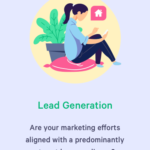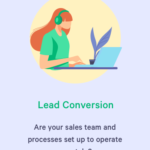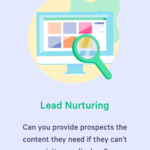BLOG
Property Marketing & Sales During COVID-19
Background
The rapid spread of COVID-19 will herald significant changes in consumer behaviour over the coming weeks as stricter government regulations come into play to slow the spread of infection.
These changes will require a swift response within the property sector to adapt marketing and sales strategies to meet a remote customer experience. The silver lining is (as always) – with change comes opportunity. You just need to be ready for it.
Changes In Consumer Behaviour
It’s not clear at this point what the overall impact could be, however given the increasing focus on social distancing below are some of the logical changes that are occurring:
- Increased online browsing due to social distancing policies
- Reduced travel and out of home activity
- Decline in walk-in traffic to displays
- Cancellation / rescheduling of appointments
The Shift To Social & Online Browsing
In a recent article on the 16th March in the AFR, Nigel Satterley indicated that the Perth business had already seen a shift mirroring the above:
“On Saturday, developer Nigel Satterley visited six of the major home builder display villages and several land sales offices in Perth to gauge the impact of the COVID-19 virus on new housing demand.
“The general feedback from sales professionals and our team was the foot traffic was down, [but that] website and social media inquiries were up.”
This on the frontline feedback has been corroborated by a recent study by US-based agency Obviously that highlights a 76% increase in daily likes on Instagram posts over the past two weeks.
Given this, let’s consider key questions across the three phases of the customer journey:



Let’s break these down a bit further…
Aligning Your Marketing To A ‘Stay At Home’ Audience
The Challenge
The increasing reality of social distancing and enforced time at home for the vast majority of your potential prospects is going to significantly impact media consumption on two levels:
- Decreased exposure to out of home media – including paid placements (outdoor signage, transit signage, bus shelters etc), non-paid placements (onsite signage, hoarding, display signage etc) and events (e.g. FHB seminars or meet your neighbours)
- Increased time spent on online browsing and social media – online activity will increase as leisure time activities are limited predominantly to the indoors. Expect to see the Screen Time app on iPhones showing time spent online well above usual averages!
The Strategy
Rethink your media mix and channel options to align with emerging behaviour.
Paid Media
As always with media planning, the old maxim of ‘spend where the eyeballs are’ rings true. It’s an ideal time to start shifting your media spend toward channels that maximise your exposure to your stay at home audience.
Channels to start optimising in your media mix are:
- Paid social media (Facebook, Instagram, SnapChat etc)
- Google Search
- Google Display Network
- YouTube
- High traffic news websites
- High traffic special interest websites
Owned Media
In addition to the paid channels above, it is critical to have a considered and well planned social content strategy to ensure you are engaging your follower networks across your various social channels.
This enforced downtime represents an ideal opportunity to grow your networks and organically increase brand awareness.
Likewise, consider a CRO (conversion rate optimisation) review of your website to ensure that it is operating well on both mobile and tablet. Simple changes like increasing load speed can have a material impact on your website’s performance.
The Considerations
Some key things to review right now in your marketing mix:
- Do you know the cost per sale of your digital marketing activity by channel so you can direct your spend to the right places?
- Are you sending your paid digital traffic to a high converting website?
- Are you doing sufficient levels of A/B testing at multiple levels to understand what is working and (more importantly) why?
- Do you have a content strategy mapped out and a regular content creation approach?
The Solution
Build a considered digital plan that integrates testing across multiple channels with the following caveats to consider:
- Think full funnel – execute strategies for the top of your funnel (exposing your brand to a wider audience to drive awareness and interest), the middle of your funnel (direct response activity to drive lead generation), and the bottom of your funnel (nurturing your existing leads through social channels to support appointment attendance and minimise the white space for your competitors)
- Demand performance metrics – go beyond impressions and click through rates to ensure you are assessing performance against deeper metrics that drive revenue (cost per lead, cost per appointment, cost per deposit etc)
- Think post click – focusing your energy on both the advertising (pre-click) and the post-click experience (website, conversion, qualification, follow up etc) delivers a seamless and mobile-optimised brand experience
The Shift To Remote Sales
The Challenge
Your sales processes are typically geared toward face-to-face meetings, display tours and walk-ins as the lifeblood of delivering sales ready leads to your teams.
We all know that there is a higher likelihood of conversion if a prospect is in front of your sales team – personal engagement is what they do best!
What happens when that is reduced or taken away?
The Strategy
Time to start thinking remote! You need to start ramping up your sales engagements across:
- Phone
- SMS
- Video
- Live chat
Note that this is for all prospects – from new leads to opportunities you are actively working on. This is going to require a decisive shift in approach that will need to be enacted quickly and efficiently given the rate at which the landscape is changing.
The Considerations
Some key things to review right now in your sales process:
- Is your CRM set up to tackle this shift (e.g. tracking and triggered communications)?
- Do you have the right telephony solution in place to move to a concierge or triage-style remote lead engagement model?
- Do you have SMS and live chat set up and operating (linked to your CRM)?
- Do you have a platform for video-based remote appointments?
- Have you got an integrated solution for appointment booking?
- Do you know what the success defining performance metrics are for a remote engagement model?
The Solution
Introduce an integrated sales concierge service. If the customer won’t come to you, you need to work out how to go to them!
Transitioning to an integrated concierge-style remote engagement model takes time and energy. We get it! Social Garden has spent the past 3 years building an on-premise, data-driven concierge service that we plug straight into our client’s sales processes.
This service includes:
- First touch outbound lead qualification for new leads from all channels
- Warm transfer of hot leads directly to your sales team (and integration to CRM)
- Inbound call engagement and handover
- Database re-engagement mining for sales-ready leads
- Triggered database engagement as part of an overarching lead nurture strategy
Think of this service as a straight sales enablement tool: it engages customers through the channels that they need, efficiently hands prospects over when they are ready to engage with your sales team and takes the heavy administrative lifting off your consultants so they can focus on what they do best – convert leads to sales.
Providing Your Clients Content When They Can’t Visit Your Displays
The Challenge
In a typical operating environment, your sales team plays a huge role in educating your prospects as they transition from a lead to an opportunity. This educating piece is generally always done in a face to face manner through display suite or display home visits (either as walk-in traffic or pre-booked appointments).
The increasing prevalence of social distancing puts this whole approach at risk. Where do you shift the focus for this all important piece of the sales puzzle?
The Strategy
Let technology be your friend!
Whilst the ‘tried and true’ face to face approach will never truly disappear from the sales space, this is the perfect time to start trialling new online methods that you can integrate into your business to afford more flexibility.
The reality is that today’s ‘on demand’ consumer (when I want it, how I want it) has very high expectations for their purchase experience — including flexible engagement that suits their needs.
If the positive that comes out of this process is that you’ve added another string to your sales bow that customers engage with, you’re likely to be one step ahead of your competitors because you’re meeting the market with what they want!
The Considerations
Some key things to review right now in your marketing & sales process:
- Are you already using video chat within your business and can you pivot your strategy quickly?
- Are you already using a marketing automation platform for your email sends and does it have the capacity to build out and serve automated lead nurturing?
- If you’re already doing lead nurturing do you need to shift your strategy given the evolving market conditions?
The Solution
Time to start tweaking and testing your nurture strategy and shift the focus to online. There’s two key solutions here based on the purchase cycle stage of your database:
- For sales ready leads – shift your sales appointments to video. There’s a multitude of fantastic video-based engagement platforms out there that allow face-to-face meetings to occur. Many businesses are already operating in this fashion. Given the prevalence of FaceTime usage and various other platforms, your customers are already used to it too. Get on board! You can also use solutions like Calendly for easy appointment booking without emails that can sync to your CRM.
- For marketing ready leads – use marketing automation to nurture your leads to track when they are ready to engage with sales. Let technology do the lifting for you. A good MA platform will offer more than just triggered email sends – you can use a multitude of other engagement channels including SMS and social. This approach makes a lot of sense given the likely increase in browse time.
The Final Word
We are all definitely operating in a fast-evolving consumer market, however change always brings opportunity. The three key things to consider as takeouts here are:
- Be Where The Eyeballs Are – adapt your marketing mix to ensure you are aligning your channel strategy to media usage and exposure
- Think Customer First – how are the emerging social distancing policies going to influence consumer behaviour and how can you offer them an acceptable alternative that meets their needs?
- First Mover Advantage – there is a huge opportunity to be first to market with solutions that meet the needs of your prospects. Perfect time to reinforce your brand positioning and demonstrate social responsibility
As Bain & Company noted in a detailed assessment of the strategies of over 3,900 companies during recession periods, those that go on the offensive early and adapt to market conditions reap the rewards when the market shifts again.
















